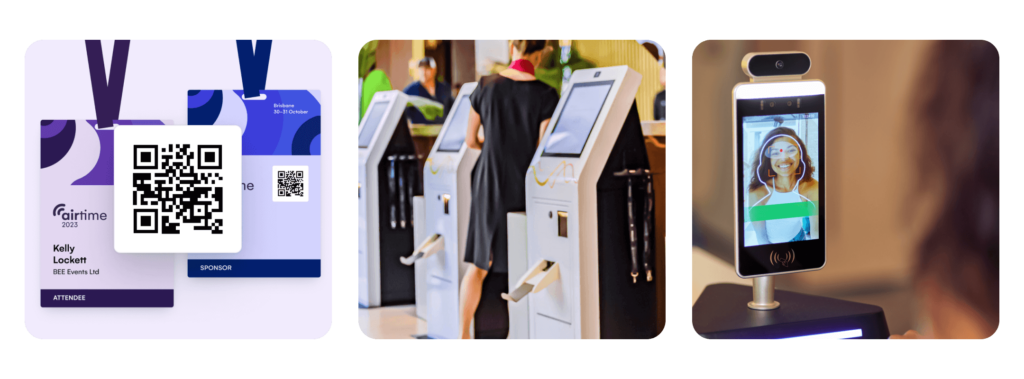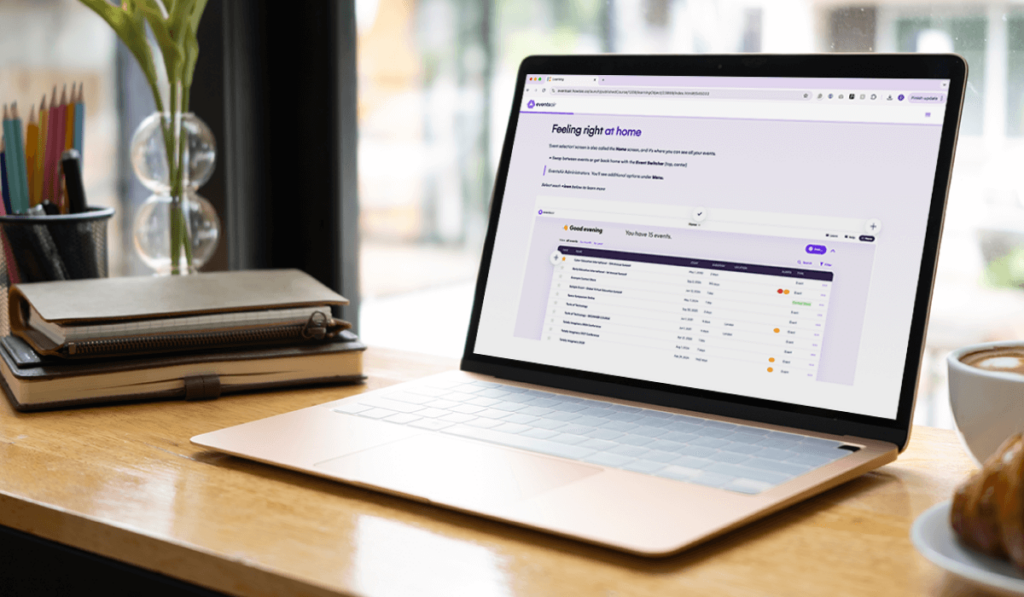The importance of tracking event attendance: Complete guide

Many years ago, effective event attendance tracking consisted of taking headcounts at the registration table and in each session, and then recording those numbers… on paper. It’s fair to say that much has changed since then. Today, event attendance tracking is a far more sophisticated affair, requiring a rich blend of strategic thinking and the right event analytics tools.
In fact, with a proactive approach to attendance tracking you can develop a much clearer picture of the audience at your next event. This information can underpin a data-driven approach to drive successful outcomes at both current and future events, helping to deliver outstanding attendee experiences.
In this article, we’ll take a closer look at why event attendance tracking is important, the benefits for event professionals as well as attendees, how you can track attendance at your next event (including the different types of technologies) and the tools you need to handle it all.
With that, let’s get started.
What is event attendance tracking?
As the name suggests, event attendance tracking is all about understanding the behavior and preferences of your attendees. In its simplest form, it means recording who attended (or checked into) your event – and who didn’t.
Beyond that, it’s about understanding what attendees are doing once they’re onsite, including which sessions they are attending, if they are leaving sessions early, what time they leave the event and much more.
Why is event attendance tracking important?
Event attendance tracking is a critical part of any data-driven event planner’s professional toolkit. Why? Because it helps you understand the attendee experience and their journey through your event. It captures powerful data about which sessions, workshops, or activities are popular (and which are not). This helps you to create better events in the future.
What are the benefits of tracking attendance at an event?
In short, there are many benefits of event attendance tracking, which flow through to all stages of the event life cycle. Some of the main ones include:

Improved attendee experience
By capturing the right data points about onsite behavior, you’ll have a far deeper understanding of your attendees’ preferences. This takes much of the guesswork out of planning and delivering events. Suppose you’re capturing and using real-time event analytics. In that case, you’ll even be able to make quick adjustments onsite for a better experience, or facilitate pop-up sessions as the event is in progress – all based on the demand of your attendees.
Measure ROI
Professional event planners are faced with the ongoing challenge of demonstrating return on investment (ROI) against their efforts. By tracking attendance at a very granular level, you’ll arm yourself with an array of numbers and trends to help demonstrate the value your event delivered. This information can be provided to clients, sponsors and other stakeholders as part of your post-event reporting.
Maximize efficiency
When you are armed with real-world data about how your attendees engaged with your event, you can make better decisions about budget allocation for future events.
Onsite security and safety
Whether you’re delivering an event for 10 people or 10,000, the last thing you want at any event is unauthorized attendees. By tracking event attendance, you’ll know that the right people are in the right place, at the right time – with no extras or security breaches.
Post-event engagement
When you have a detailed understanding of individual attendee journeys at your event, you can be far more targeted (and therefore, effective) in your post-event engagement with them. Rather than generic “thank you for coming” emails, imagine the power of sending an email asking for feedback on specific sessions, or reminding them how much they loved a certain speaker. The possibilities are endless.
Does event attendance tracking benefit attendees?
We now know that event attendance tracking offers numerous benefits to event organizers, as well as clients and sponsors. But what about the attendees themselves?
The answer is yes – event attendance tracking is beneficial to the people participating in your event. As noted above, by tracking attendance you’ll be able to enhance and streamline their event experience by offering personalized alerts and interactions. All in all, it’s a process that creates better events for everyone.
How do you track attendance at events?
There are several ways you can track attendance at events. From the traditional and completely manual (using headcounts and writing the numbers down on paper, or perhaps recording them in an Excel spreadsheet), to the very advanced – some of which we’ll discuss below.
If you’re organizing a very small meeting or event that is internal to your company, you may be able to get away with using more manual tools and processes. However, for the vast majority of events, you should be harnessing the power of advanced event analytics and tracking tools.
Let’s take a look at some of these now.

QRs and barcodes
QR and barcode check-in (often using a customized event app) has become very popular in the last few years, as it’s an incredibly efficient way to facilitate instant event check-in. It can reduce waiting times, particularly if everyone is arriving at your event at roughly the same time.
Self check-in kiosks
At EventsAir, we love self-service kiosks for all types of events. They offer a fast, seamless solution, empowering your attendees to check in at their own leisure and convenience. It can limit wait time and lines at the registration desk, and enhance the overall check-in experience.
Find out how Tata Consultancy Services transformed the event check-in experience for 300 C-suite level attendees using contactless self check-in kiosks at TCS Summit Europe.
Swipe cards
Swipe cards are a preferred option for many high-security events. As well as being access cards, they can double as ID badges, if required.
RFID or Bluetooth assisted
Radiofrequency identification or RFID is a type of technology that uses electromagnetic waves to automatically track and identify tags that are attached to objects (for example, wristbands).
RFID wristbands can track your attendees in real time and control access to various parts of your event.
Bluetooth is another short-range wireless technology that functions similarly and can be embedded in wearable tags or bands.
Facial recognition
Facial recognition as a way of tracking event attendance may be further down the track for most event professionals, however some are already experimenting with it. Facial recognition will eliminate the need for ID cards and wristbands, providing instant check-ins and top-of-the-line security screening.
Track the metrics that matter with EventsAir
Every event planner needs great data to deliver even greater events. EventsAir provides expansive reporting, event analytics and robust filtering capabilities, ensuring you have a single source of truth for accessing and harnessing the most meaningful event data.
Our award-winning solution simplifies the data analysis process, making it easy and error-free. Our real-time data synchronization and sharing capabilities ensure up-to-the-minute accuracy. Whether you’re tracking attendance and registrations, sponsorships, accommodation or financials, our treasure trove of more than 150 purpose-built reports will ensure you’re always armed with the right information when you need it.
We have one simple mission: to help event planners deliver the WOW in their events with the world’s most powerful event management technology. We’ve delivered some of the world’s biggest events, and we’d love to help you too.
If you would like to understand how we can help you unleash the power of data and analytics on your next event then schedule a demo with one of our team members today.



